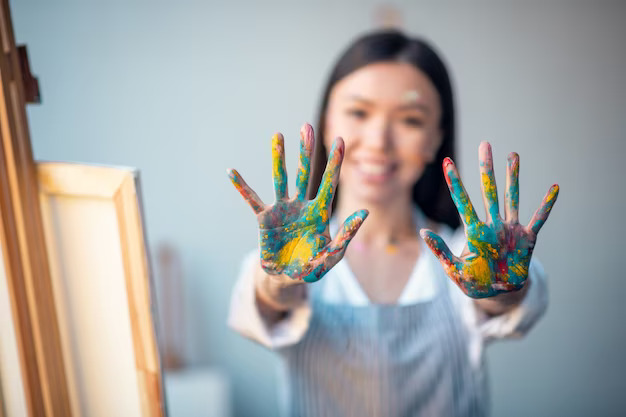Color therapy, also known as chromotherapy, is a holistic healing practice that involves using colors to promote physical, emotional, and mental well-being. This alternative therapy is based on the belief that different colors have specific energies and vibrations that can influence various aspects of a person’s health and mood. It’s important to note that color therapy is considered a complementary and alternative therapy, and its effectiveness varies among individuals.
Is Color Therapy the Key to Healing Anxiety?
It’s important to note that color therapy is best used in conjunction with evidence-based treatments for anxiety, such as cognitive-behavioral therapy (CBT), mindfulness practices, and medication if prescribed by a healthcare professional. Consulting with a mental health professional is crucial to develop a comprehensive approach tailored to your individual needs.
Why Is Color Therapy Important?
In the search for relief, consider harnessing the potential of Color Therapy as a tool to alleviate anxiety, supported by the guidance of “Online counselling” for comprehensive healing.
- Emotional Influence: Colors can evoke specific emotions and feelings. Chromotherapy. utilizes this connection to help individuals regulate their emotions, reduce stress, and enhance overall well-being.
- Non-Invasive:
- Color-based therapy is a non-invasive and drug-free approach to promoting mental and emotional balance. It can be easily integrated into daily life and used as a complementary practice alongside other therapies.
- Self-Awareness: Engaging with colors can foster self-awareness by prompting individuals to reflect on their emotions and responses to different shades. This self-awareness can lead to greater emotional intelligence and self-regulation.
- Positive Distraction: Colors offer a positive and visually pleasing distraction from negative thoughts and emotions. Engaging with uplifting colors can help shift focus away from stressors and enhance mood.
- Aesthetic Joy: Surrounding oneself with preferred colors or engaging in Light therapy practices can bring aesthetic joy and contribute to a sense of beauty and harmony in one’s surroundings.
Unlock the potential of Color healing to ease anxiety, coupled with the guidance of an “Online counselor”, for a comprehensive approach to healing and well-being.
The Impact of Color Therapy on Mental Health
Color therapy, also known as chromotherapy, can have a positive impact on mental health by utilizing specific colors to influence emotions, mood, and overall well-being. Here are some ways Color-based wellness may impact mental health:
- Mood Enhancement: Different colors are believed to evoke specific emotions. Engaging with these colors through Color-based therapy can help improve mood and emotional balance.
- Stress Reduction: Calming colors such as blue and green are often used in Color medicine to help reduce stress and anxiety. Exposure to these colors can promote relaxation and a sense of tranquility.
- Elevating Spirituality: Certain colors, such as purple, are associated with spirituality and introspection. Engaging with these colors can encourage a deeper connection with oneself and a sense of inner peace.
- Boosting Creativity: Colors like yellow and orange are believed to stimulate creativity and encourage a positive outlook. Engaging with these colors can enhance cognitive flexibility and innovative thinking.
- Easing Depression: Bright and vibrant colors can have an uplifting effect and may help combat feelings of sadness and depression. Chromotherapy aims to provide a visual boost to emotional well-being.
- Promoting Focus: Different colors can impact concentration and focus. For instance, blue is often associated with mental clarity and focus, making it beneficial for tasks that require sustained attention.
. While Color healing is not a replacement for professional mental health treatment, it can complement other therapeutic approaches and self-care practices.
10 Tips to Enhance Your Mood with Color Therapy
Utilizing color therapy to enhance your mood involves incorporating specific colors into your environment and daily routines. Here are 10 tips to help you harness the potential benefits of Color-based wellness for mood enhancement:
- Colorful Surroundings: Decorate your living and working spaces with colors that resonate with you. Opt for shades that evoke positive emotions, such as calming blues or energizing yellows.
- Wardrobe Choices: Wear clothing in colors that align with your desired mood. For example, choose vibrant colors on days you want to feel energetic or soothing hues when you seek relaxation.
- Colorful Foods: Consume a variety of colorful fruits and vegetables, as different hues often indicate different nutrients and antioxidants that can support overall well-being.
- Imagination: —With your eyes closed, picture yourself in an area that is a certain colour to match the atmosphere you want to create. Imagine absorbing the color’s positive qualities.
- Color Meditation: During meditation, focus on a single color. Breathe deeply and envision the color spreading through your body, bringing along its associated emotions.
- Color Bath: Incorporate Chromotherapy into your bath routine by using colored bath salts or lighting with specific colored bulbs. Allow yourself to relax and absorb the color’s energy.
- Nature Walks: Spend time outdoors immersed in nature’s vibrant colors. Connect with the environment around you to uplift your mood.
- Artistic Expression: Engage in art or crafts using colors that resonate with your emotions. Painting, drawing, or coloring can be therapeutic and mood-enhancing.
Conclusion
Remember that color therapy’s effects can vary from person to person, and it’s essential to approach it with an open mind. Experiment with different colors and techniques to discover what resonates best with you.


